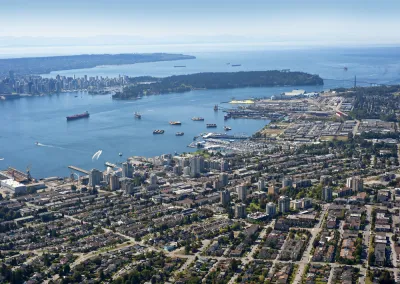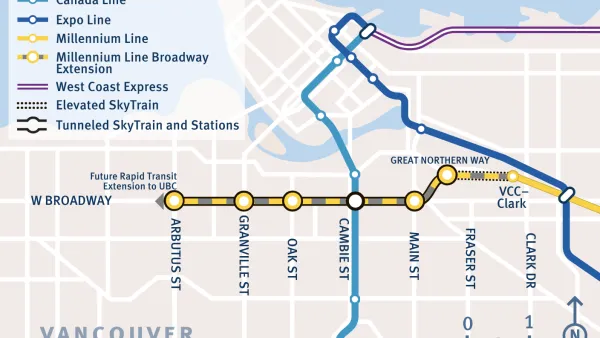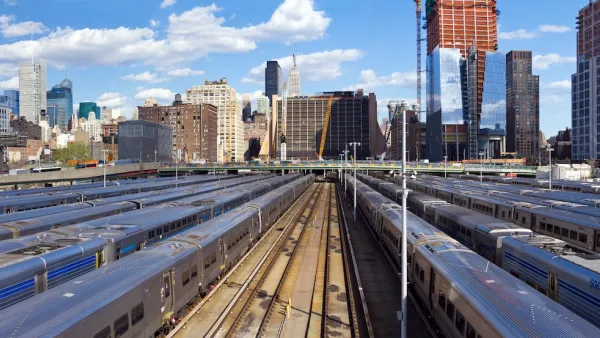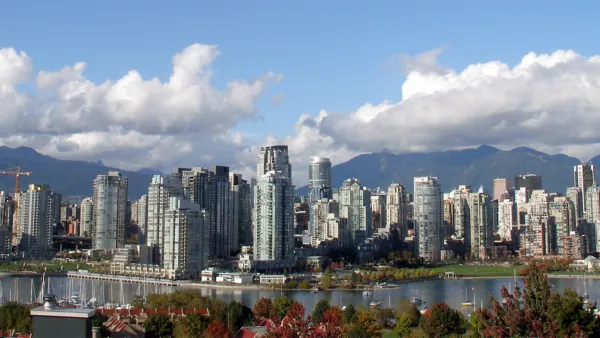A 12-story residential tower proposed for a Vancouver neighborhood is receiving pushback from housing advocates and the local Chinese community.

A 128-unit residential tower proposed in Vancouver's Downtown Eastside neighborhood is stoking fears in some residents that their neighborhood is about to get a lot more expensive. The Province's Nick Eagland reports that 60 percent of the tower’s units would be "social housing," with the remainder at market rate. However, the Carnegie Community Action Project (CCAP) argues that the below market rate prices won’t meet the demand of the neighborhood’s residents.
CCAP’s Jean Swanson, a veteran housing activist, said a requirement for only one-third of the non-market units to be rented at the CAN$ 375 shelter rate — equating to 20 per cent of the overall number of units — does little to help all those struggling on a CAN$ 610 welfare cheque.
“They aren’t good enough because what we desperately need in the Downtown Eastside is housing for homeless people and housing for people who live in the SROs,” Swanson said.
The tower will take over a parcel developed with multiple retail businesses, most of them primarily operated by the local Chinese community, which Eagland reports has caused concern among locals that they will soon be gentrified out.
King-mong Chan, an organizer with the Chinatown Concern Group, said the development will hurt the "essence" and heritage of Chinatown.
“Traditionally, it’s served working-class Chinese people, but now with the development and the gentrification, it’s changing to a more trendy kind of neighbourhood similar to Yaletown,” he said.
The developer, Wall Financial Corp., will be meeting with the community to answer questions prior to going before the city’s Development Permit Board in January.
FULL STORY: Plan for 12-storey residential tower in Vancouver's Downtown Eastside raises gentrification fears

National Parks Layoffs Will Cause Communities to Lose Billions
Thousands of essential park workers were laid off this week, just before the busy spring break season.

Retro-silient?: America’s First “Eco-burb,” The Woodlands Turns 50
A master-planned community north of Houston offers lessons on green infrastructure and resilient design, but falls short of its founder’s lofty affordability and walkability goals.

Delivering for America Plan Will Downgrade Mail Service in at Least 49.5 Percent of Zip Codes
Republican and Democrat lawmakers criticize the plan for its disproportionate negative impact on rural communities.

Test News Post 1
This is a summary

Test News Headline 46
Test for the image on the front page.

Balancing Bombs and Butterflies: How the National Guard Protects a Rare Species
The National Guard at Fort Indiantown Gap uses GIS technology and land management strategies to balance military training with conservation efforts, ensuring the survival of the rare eastern regal fritillary butterfly.
Urban Design for Planners 1: Software Tools
This six-course series explores essential urban design concepts using open source software and equips planners with the tools they need to participate fully in the urban design process.
Planning for Universal Design
Learn the tools for implementing Universal Design in planning regulations.
EMC Planning Group, Inc.
Planetizen
Planetizen
Mpact (formerly Rail~Volution)
Great Falls Development Authority, Inc.
HUDs Office of Policy Development and Research
NYU Wagner Graduate School of Public Service





























